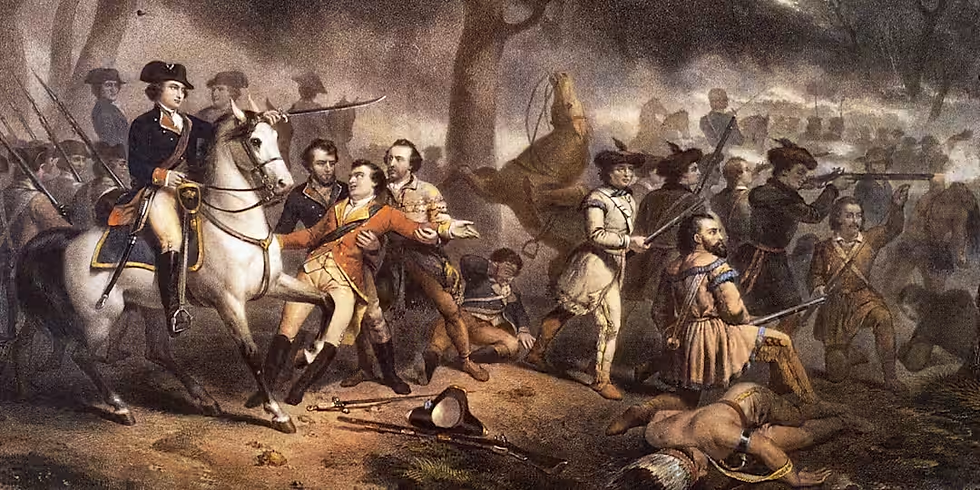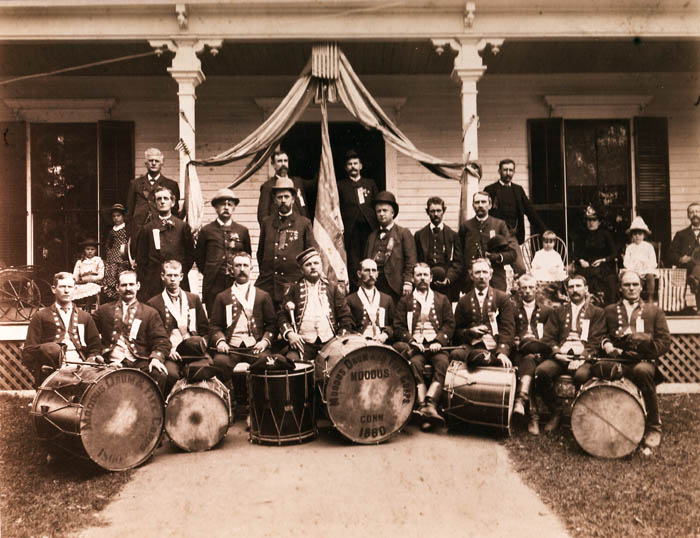The Hessians and the Convention Army March through Wilbraham
- David Bourcier
- Nov 5
- 3 min read
Updated: Dec 11
Hessians were German soldiers hired by Britain to fight in the American Revolutionary War. Between 30,000 and 37,000 served in America, about one quarter of all British land forces. Most came from the German states of Hesse-Kassel and Hesse-Hanau.
Though often called mercenaries, the Hessians were technically auxiliaries, troops loaned by their governments to Britain while remaining under their own officers and command. They fought as organized units under their own flags. Hessian soldiers played a major role in several key battles, including White Plains and Fort Washington, bolstering the British war effort. However, their presence outraged many colonists, who viewed Britain’s use of “foreign mercenaries” as proof of tyranny, a complaint later included in the Declaration of Independence.

After General John Burgoyne’s surrender at Saratoga on October 17, 1777, more than 5,000 British and German soldiers, along with women and children, set out for Boston under the terms of their surrender. They were to be shipped back to England, but that plan never materialized. This group became known as the Convention Army, and their route took them through western Massachusetts.
The German contingent crossed the Connecticut River into Springfield on October 31, 1777. Although the town impressed them, the locals refused to offer quarters. Major-General Friedrich Adolph Riedesel noted that residents of East Springfield denied his men lodging, forcing them to move on toward Palmer. Militiaman Joshua Pillsbury confirmed camping near Springfield that night and reaching Palmer the following day, matching accounts that the troops bivouacked in the woods east of town. Brunswick grenadier Johann Bense also recorded spending the night “across the Connecticut River…in the woods.”
On November 1, the Germans marched about twelve miles to Palmer, following the post road along the northern edge of Wilbraham, and possibly through a corner of Monson. While Wilbraham received little mention in the 1777 records, it gained attention the following year. In 1778, during another march of British and German prisoners bound for Virginia, teamsters hired to transport supplies rebelled over unpaid wages. According to one German officer, “They all formed a circle and, lifting their hands, swore that they would not stay,” a German officer would note, adding that the men “fully proved themselves to be inhabitants of the State of Massachusetts, not to be governed so easily.”
Palmer, incorporated only two years earlier in 1775, was described by the weary troops as “a wretched village,” where they again camped outdoors. Surgeon Julius Friedrich Wasmus noted that the next day’s march would take them from Palmer to Brookfield, continuing toward their eventual quarters at Winter Hill near Boston.
When the Convention Army was transferred south in 1778, General Burgoyne himself was no longer with them; he had been returned to British lines in Newport, Rhode Island. On November 7, 1778, about 4,145 troops, along with baggage wagons, General Riedesel, his wife, and their four children, began their journey through Massachusetts toward Virginia.
As they passed along the Post Road and over the old Stone Bridge in Wilbraham, the column was diverted from its earlier eastward route to Boston. Instead, the British were directed south along the West Road (now Main Street) in Wilbraham. This change, ordered by the Americans, kept the prisoners away from Springfield’s arsenal. The troops likely camped near Wilbraham’s town center before resuming their march toward Enfield, Connecticut. From there, they crossed the Connecticut River into Suffield and continued south to Virginia, marking the final passage of the once-proud army of General Burgoyne.




Comments